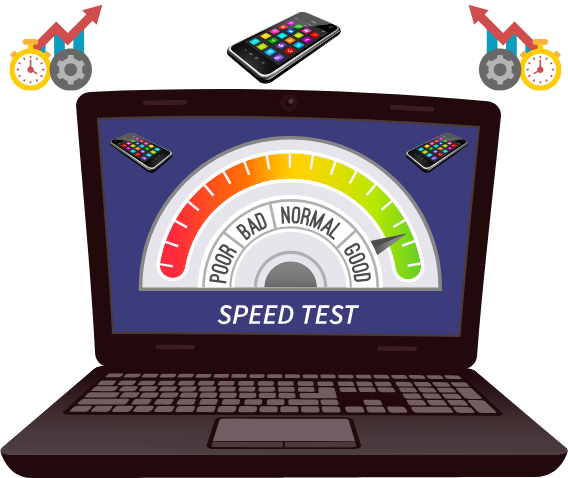Optimize Blog Posts for SEO: Quick Guide
This quick guide explains how to optimize blog posts for SEO to help your content rank high and get found in the SERPs (search engine results page). SEO, or Search Engine Optimization is essential for boosting a blog’s visibility in search engine results, thereby driving more organic traffic.
By applying SEO strategies such as using the right keywords, optimizing content structure, and enhancing site speed — bloggers can ensure their posts reach their target audience effectively.
Not only does SEO help your blog appear higher on search engine rankings, but it also enhances user experience, leading to better engagement and shareability. In short, adept use of SEO is key for any blogger aiming to expand their readership and online presence.

Keyword Research to Optimize Blog Posts for SEO
Choosing relevant keywords is crucial for effective SEO because it helps determine how your content connects with the interests and search queries of your target audience. Keywords act as the bridge between user intent and your content, guiding search engines on when to display your blog post in search results.
Using well-researched, relevant keywords ensures that your content reaches the right people, which not only boosts your visibility but also increases engagement rates by attracting readers genuinely interested in what you have to offer. Additionally, appropriate keyword selection drives better-quality traffic and can improve overall SEO performance and conversion rates.
Tips for integrating keywords into content
Integrating keywords into content should feel natural and reader-friendly. Begin by incorporating your main keyword in the title, headers and early in the text. Use variations and related long-tail keywords throughout the content to address diverse search queries without resorting to keyword stuffing.
Also, place keywords in meta descriptions, image alt texts, and URLs to improve SEO. Always prioritize smooth, engaging writing to maintain content quality and avoid penalties from search engines.

Content Optimization
Crafting SEO-friendly content that captivates readers starts with a magnetic title featuring your main keyword. Keep your paragraphs short and employ subheadings containing related keywords to maintain clarity and interest. Write compelling content that seamlessly blends in keywords without sacrificing the natural flow of language.
Incorporate visuals and interactive media to enrich the user experience. Utilize internal linking to guide readers through your website, and back up statements with external links to authoritative sources for credibility. Always aim for originality and substance to answer your audience’s questions and encourage search engines to reward your content’s visibility.
Importance of headings, originality and readability
Headings, originality and readability are crucial elements in crafting effective content. Headings guide readers through your text, making complex information accessible and engaging, while also helping search engines understand and rank content.
Originality ensures your content stands out, providing unique value that attracts and retains readers and avoids penalties from search engines for duplicate content.
Readability is essential for holding your audience’s attention, simple, clear language and a well-organized structure can significantly enhance user experience and engagement. Together, these elements not only improve SEO performance but also foster a more enjoyable and informative reading experience.

Multimedia Use to Optimize Blog Posts for SEO
Optimizing images and videos for SEO is essential for enhancing website performance and visibility in search engine results. For images, use descriptive, keyword-rich file names and alt text to help search engines understand and properly index the content. Compressing images improves page load times, enhancing user experience and SEO.
For videos, incorporate relevant keywords in the title, description and tags. Hosting videos on platforms like YouTube can also improve their discoverability. Additionally, adding a video transcript not only makes your content accessible to more users but also provides more text for indexing by search engines, boosting overall SEO efforts.

Linking Practices to Optimize Blog Posts for SEO
Internal and external linking are pivotal strategies in SEO and user engagement. Internal links connect various pages within your website, helping users navigate and discover more relevant content, thereby increasing their time spent on the site. This internal web of links also allows search engine crawlers to find and index pages more efficiently, boosting your site’s SEO.
External links, on the other hand, point to authoritative external sources, enhancing your content’s credibility and reliability. They can also foster relationships with other websites, potentially leading to backlinks that further elevate your site’s authority and search engine ranking.
Together, internal and external linking not only enhance the user experience but also significantly contribute to a website’s visibility and authority online.

Meta Descriptions & Title Tags
Crafting effective meta tags is a key strategy for improving your website’s visibility in search engine results. The meta title and description should be concise, compelling and contain relevant keywords to attract the attention of both search engines and potential visitors.
The title tag acts as a headline, while the meta description provides a brief overview of the page’s content, enticing users to click through to your site. It’s also important to ensure that each page has unique meta tags to avoid any penalties for duplicate content.
Properly utilized, meta tags can significantly enhance click-through rates, driving more traffic to your website and improving its SEO performance.

Mobile & Speed Optimization
In today’s fast-paced digital environment, mobile-friendly designs and quick loading times are essential for a successful online presence. To achieve this, prioritize responsive design, ensuring your website automatically adjusts to fit the screen size and resolution of any device.
Utilize compressed images and videos to keep file sizes down, speeding up page load times. Implement lazy loading so that content is only loaded when it becomes visible to the user, further improving speed. Minimize the use of heavy scripts and opt for modern, lightweight web technologies.
By focusing on these aspects, you not only enhance the user experience for mobile users but also improve your website’s overall performance and search engine ranking, as speed and mobile usability are key factors in SEO.

Monitoring SEO Performance
Leveraging tools like Google Analytics is essential for tracking improvements and understanding the performance of your website. By setting up Google Analytics, you gain access to valuable data such as user behaviour, traffic sources and engagement metrics, allowing you to make informed decisions based on real-time insights.
You can monitor which pages are most popular, where your visitors are coming from and how they interact with your content. This information can help you identify successful strategies and areas in need of optimization.
Regularly reviewing analytics enables you to measure the impact of changes you make and incrementally improve your website’s user experience, SEO and conversion rates, ensuring you’re aligned with your business objectives.

Conclusion
Effective SEO strategies for bloggers and webmasters centre around creating engaging content enriched with targeted keywords, ensuring posts answer the questions their audience is searching for. It’s important to keep content fresh and relevant, as this increases the chance of earning backlinks and elevating domain authority.
A site should be optimized for mobile users with fast loading times to improve user experience and reduce bounce rates. Strategic use of meta tags, including title tags and meta descriptions can help boost search result rankings.
Finally, incorporating a mix of internal links to keep readers on-site longer and external links to reputable sources, can signal a network of quality information search engines favour.
Are you struggling to skyrocket your site’s visibility? Elevate your site’s SEO through our specialized Optimize Blog Posts service. Begin enhancing your content now to improve your search engine rankings and expand your online visibility.






